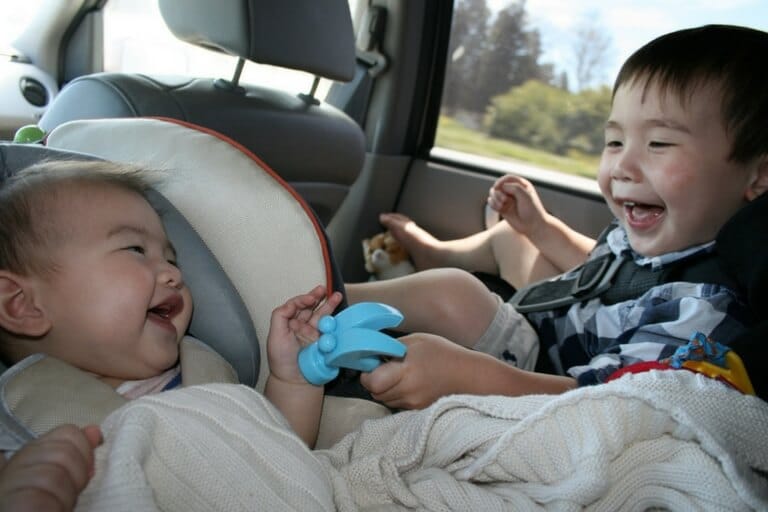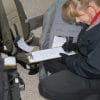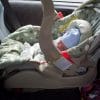A child is best seated in a car seat. That’s a fact, and there’s no going around it.
Over time, car seats have evolved to provide better protection for our little passengers. Car seats today are now heavily-padded. Newer technologies are also implemented to improve front, back, and side impact protection.
And there’s nothing wrong with that. After all, who would be willing to put a child in a car seat that lacks in safety features? No one.
Unfortunately, heavily-padded car seats have become ‘deeper.’ As a result, they’re more prone to heat entrapment.
As much as we all love summer, we also need to pay close attention to our little passengers. Since 1998, the average number of children who died per year is 37. And the culprit — heatstroke.
Older children can express distress when they’re not comfortable. A baby who gets too hot in a car seat cannot. As such, they’re extremely susceptible to heatstroke.
Dangers Of Infant Overheating
Heatstroke
This happens when the body can no longer cool itself and starts to overheat. Infants are unable to regulate their body temperature during their first few weeks of life. That means that it’s up to us, adults, to keep them fresh.
If your baby’s heat exhaustion progresses to heat stroke, look for the following signs:
- Rapid and shallow breathing
- Restlessness
- Rapid pulse
- High temperature of 103 degrees Fahrenheit (39.4 degrees Celsius) or higher — but no sweating
- Hot, red, and dry skin
- Irritable
- Vomiting
- Unconsciousness
- Not responding enough when you call his name or tickle him
Dehydration
Babies can quickly become dehydrated especially during warm weather. Again, babies and children are more than likely to become dehydrated compared to adults. It can happen even if he takes enough fluid but loses a lot through sweating.
Severe dehydration can be life-threatening, so pay attention to these symptoms.
- No tears while crying
- Lethargy
- Darker and stronger-smelling urine than usual
- Fewer wet nappies
- Dry mouth and lips
- Sunken eyes
- Excessive sleepiness or fussiness
- Sunken fontanels (soft spots on your baby’s head)
SIDS
The American Academy of Pediatrics has linked overheating to an increased risk of SIDS (Sudden Infant Death Syndrome). The exact causes of SIDS are unexplainable until now. However, researchers believe that temperature is a factor.
Brain Damage
Our brains are made up of very sensitive tissues. A baby’s brain is even more sensitive to high temperatures. Brain damage can occur because of overheating since the head is where the most heat is lost.
Prickly Heat
Although not as dangerous as the first three, prickly heat or miliaria is often linked to overheating. Heat rash usually occurs on clothed parts of the body like the groin, abdomen, and armpits.
It’s nothing to worry about since they go away after a few days. But if the rash extends outside the usual areas, it’s best to consult a doctor.
Signs A Baby Is Overheating
The symptoms of an overheated baby may not appear until the situation is serious. A few minutes is all it takes for a baby to become dehydrated and possibly suffer brain damage.
Urgency is a must.
The following steps will help determine if a baby is overheated.
- Check if your baby’s neck and head are damp by touching him. A sweaty child will usually show these signs.
- Look at your child’s face. If it has a rash or is redder than usual, he might be overheating.
- Feel your baby’s chest if it’s hot than usual and if he has a rapid heart rate. If he’s also breathing rapidly, these could mean that he’s feeling too warm.
- If they’re vomiting and you know that he’s not sick, overheating might be the cause.
- Lastly, a baby that doesn’t seem to respond or is less animated when you interact with them is a symptom of overheating.
Keeping your car seat cool
Car seat makers are very much aware of the dangers of overheating a baby while inside the car seat. They’ve even made ‘premium’ models that come with breathable fabric. Some, even have a feature that keeps liquids away from your baby’s skin.
However, these ‘premium’ car seats usually come at a very hefty price tag. The good news is that you don’t necessarily need one. The following practices should keep your little rider cool while you’re on your way.
- Turn on the A/C before the ride
- Morning trips are preferable (if possible)
- Don’t dress to impress and save the beautiful clothes when you arrive at your destination. Keem his clothes simple and light.
- Park in shaded areas (again, if possible)
- Leave your windows slightly open
On top of these tips, there also things that you can use to lessen the heat.
Cool Drinks
Plenty of water before and after the trip can go a long way. Avoid cups as they can become dangerous projectiles. Make sure there’s an adult in the back to offer him periodic sips if necessary.
Noggle
A noggle is a comfort system that directs the air from one of the car’s vents to your little one at the back. Car seats, specifically, rear-facing ones don’t get much air inside your vehicle. That’s because the air only hits the back part of the seat.
And when it’s time to keep baby warm (in winter), the noggle can also do the job.
Cooling Towels
A cooling towel can help also works well in keeping your baby comfy during the ride. Just wet a towel, twist to remove excess water, then put them on top of your baby’s hips and legs.
An evaporative cooling towel works even better since it stays wet longer compared to an ordinary cloth.
Window Tints
There are types of tints that can block UV rays which are harmful not only to children but to adults as well. Tinted windows area also safer because they’re laminated. In the event of a crash, the glass will not shatter into tiny little pieces.
A tinted window will also give you privacy if you need to stop for breastfeeding.
Seat Cooler
These are ice packs that are specifically designed for use in car seats. Just keep them in the freezer a few minutes before you leave, place them on the seat, remove, and put your baby in.
Car Seat Fans
One other thing that you can use to keep baby from sweating in the car seat is a car seat fan. Do note, that it’s ideal to be used on toddlers and older kids. You can use it on a baby provided that there’s an adult in the back to supervise.
Is The Car Seat The Cause Of Overheating?
Some parents have complained about their kids overheating in some car seats. Unfortunately, it doesn’t apply to specific models in particular. Furthermore, there hasn’t been a study yet to confirm that a car seat itself can cause overheating.
Even the more expensive car seats are also prone to overheating. The materials used in today’s car seats are probably to make them durable and stain-resistant.
If you can find a car seat that has a mesh cover, that would be the better option. This type of material is breathable, so your little one has fewer chances of getting all sweaty. There are even some strollers that use mesh.
Take a look at these car seats, for instance.
Conclusion
Admittedly, the heat of the sun is something that most people long for. If you live in an area that doesn’t get much sunlight, summer is sure to be a much-awaited time of the year. However, you always have to make sure that you don’t put your little one at risk from too much heat.
As long as you follow the guides in here, you can rest easy and enjoy the sun knowing that your precious passenger is safe and sound.


